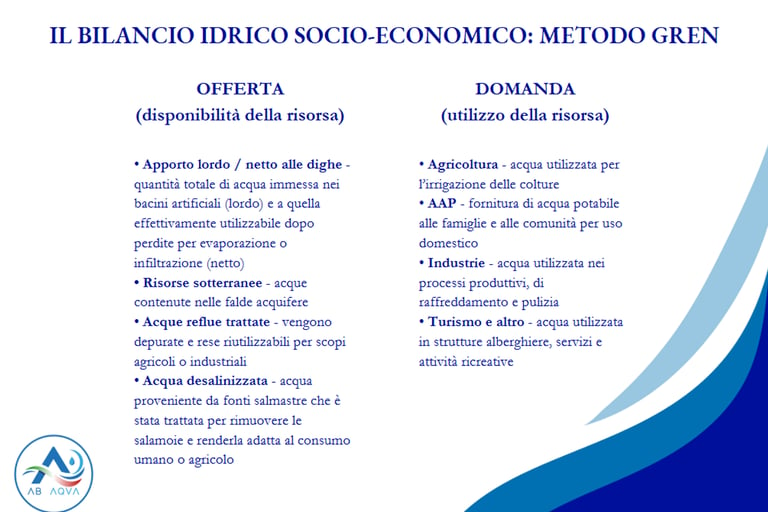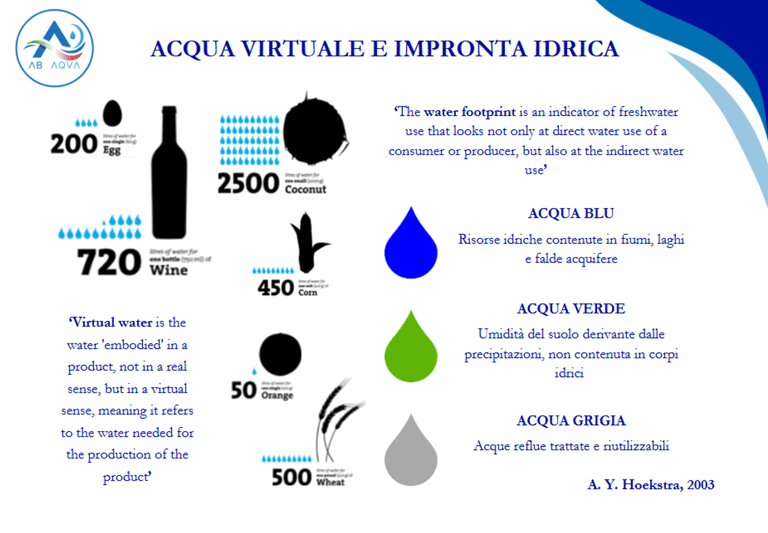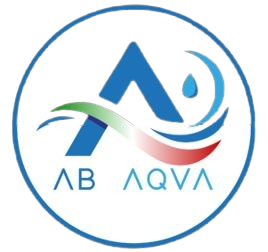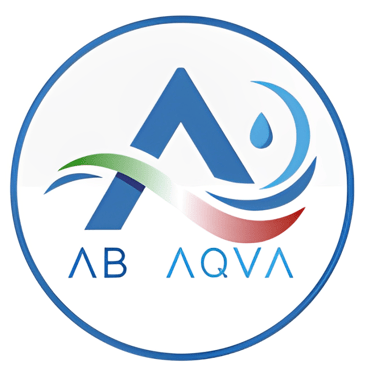Virtual Water And Global Markets: A New Perspective On Water Balance
Nicole Bernoni - March 18, 2025


Introduction
In the second half of the 20th century, attention to the importance of water has increased not only from an environmental point of view, but also from a social, economic and cultural one. In just a few decades, there has been a shift from a culture of water as a vital resource, i.e. essential and irreplaceable, an almost infinite resource because it is renewable, and therefore a common good for which the community is responsible in the general interest, to a culture of water as a ‘precious’ resource, of great use and exchange value, a predominantly economic resource, and therefore a good that can be appropriated privately (Ciervo, 2010). Moreover, water is no longer just a local resource, but also a global one; human activities, particularly trade, influence the water cycle far beyond geographical boundaries. However, socioeconomic water balances tend to focus exclusively on the water present in a specific geographic area, ignoring the flows that move through the international trade of goods. The latter are produced through water resources, which are said to be ‘virtual’, as they are no longer present in the product itself, but have been used in the production process. In this sense, water crosses borders through the import and export of goods and services, a phenomenon known as virtual water trade: when each country exports goods, it also indirectly exports the water used to produce them. The same applies to imports (Selvatici, 2022)
The concept of virtual water dates back to the early 1990s and is due to the geographer, Tony Allan, who throughout his life has tried to promote the most water-conscious approach possible. ‘To produce a cup of coffee requires 140 litres of water, between production and transport’, he told his students at the University of London. Virtual water is the volume of fresh water used to produce a certain product, i.e. the sum of the water that has been used throughout the production process to produce a foodstuff, a consumer good or a service. In the context of the food trade, it is the fresh water used to grow the plants that will later be used in food, but also used to feed animals. It is called virtual because the water that is actually contained in a good, whatever it is, does not represent all the water that was used to produce it. Thus, the water is no longer present in the good itself but is in a virtual way (Allan, 2011).
For example, the water needed for crops amounts to 1000 - 3000 m³ per tonne of grain harvested. In other words, it takes 1-3 tonnes of water to grow 1 kg of rice (FAO, 2024), which implies that exporting this amount to a country results in an equivalent export of water. According to the Water Footprint Network, in the period 1996-2005, global trade in virtual water averaged 2,320 km³ per year. Net exporting countries such as Brazil, the United States and Australia transfer large quantities of virtual water through agricultural products such as animal feed, cereals and soya to net importers such as the European Union, Japan and China, which are heavily dependent on these resources. This phenomenon has significant implications for global water resource management, as water-abundant countries can alleviate the water stress of water-scarce nations through virtual water trade. Thus, this approach suggests that to review the global water balance, one cannot simply look at water supply and demand as a physical resource, but must consider hidden water flows in international trade. As a result, countries dependent on the import of water-intensive goods become vulnerable to water availability in exporting countries, while the latter can exploit this dynamic to strengthen their geopolitical influence. In this context, trade and environmental policies must necessarily complement each other to prevent imbalances and potential tensions related to access to water resources.
The socio-economic water balance: water supply and demand
Understanding the dynamics of water supply and demand makes it easier for us to recognise the economic value of water, emphasizing its importance as a limited and valuable resource. To meet the growing demand for water, there are typically two possible approaches: supply-side, i.e. meeting demand with new resources, or demand-side, i.e. managing consumption demand to postpone or avoid the need to develop new resources.
Understanding the water balance can be complex, as water resources are varied and sometimes difficult to distinguish. For example, the ARESET (Appui aux réformes dans le secteur de l'eau en Tunisie) team of the German cooperation and development agency GIZ (Deutsche Gesellschaft für Internationale Zusammenarbeit), operating in Tunis, proposes a method to simplify the understanding of water balance. A concrete example of this methodology is the GREN (Gestion des Ressources en Eau pour les Nuls) method, a real balance that clearly illustrates the main components of water supply and demand. This approach, which focuses on demand, aims at reducing waste and optimising the use of available resources.


Fig. 1 - "GREN Method," model created by the A-RESET team (GIZ – Tunisia), 2024
Water demand is divided into four main sectors. The first is agriculture, which uses water for crop irrigation. The second sector is the supply of drinking water to households and communities for domestic use. The third sector concerns industry, where water is employed in production processes, cooling, and cleaning operations. Finally, tourism and other services consume water for the operation of hotels, recreational activities, and related services.
In terms of global consumption, it is estimated that 70% of the water consumed on Earth is used for agriculture, 20% for industry, and 10% for domestic purposes. This highlights how agriculture is by far the sector with the greatest impact on water demand. Indeed, as mentioned, water use efficiency in agriculture is vital to ensuring crop productivity and the sustainability of water resources.
However, future water demand will be subject to various changes, and new factors will influence it. For instance, consider the rapid development of artificial intelligence and its increasing use in mass consumption. A recent study conducted by the University of California revealed that powering AI models like ChatGPT-3 requires approximately 500 milliliters of water for every 10 to 50 responses provided to users. For the next-generation model, this amount is even higher.
Water supply, which refers to the availability of water for different uses, is based on several main sources. One of the most significant is groundwater, the primary source of freshwater. It is found in the pores and fractures of underground rocks, forming aquifers that can be exploited for human, agricultural, and industrial water supply. Although its importance is often underestimated—mainly because it is not as visible as rivers, lakes, or dams—groundwater plays a crucial role in ensuring water availability during drought periods or in areas with limited or polluted surface water resources. Sustainable management of this resource is essential to guarantee a continuous and reliable supply. However, excessive extraction can lead to the progressive lowering of water tables, causing problems such as land subsidence and a decline in water quality. Therefore, monitoring and regulating groundwater use is crucial to preserving it in the long term.
Another component of the water supply is the net water flow, which represents the inflow of water from rivers and aquifers, net of outflows and changes in reserves. Interannual variations in reserves refer to the amount of water stored in natural reservoirs such as snow, ice, lakes, aquifers, and soil moisture. Another important element is runoff, which corresponds to annual precipitation net of evaporation. However, due to the natural water cycle, empirically measuring runoff is complex and is generally estimated using climatological data and simulation models.
Another resource in the water supply is treated wastewater. After undergoing purification, it can be reused in agriculture or industry, helping to reduce pressure on freshwater resources. However, using treated wastewater requires advanced technologies to ensure that the water is free of contaminants and safe for use.
Finally, desalinated water is playing an increasingly significant role, especially in coastal and arid regions. This process removes salts and other minerals from seawater to make it potable and is an increasingly adopted solution to address water scarcity. Although desalination plants require significant energy and infrastructure investments, they provide a long-term sustainable resource, transforming saline water into a usable source for human and agricultural consumption.
Israel is an emblematic case of water resource management. The country has developed a management model based on expanding water supply by investing heavily in desalination, achieving a water surplus. However, the strategy of expanding water supply through desalination has recently been used as a geopolitical tool: control over water resources in Palestinian territories serves as a strategic lever to influence power dynamics in the region.
Thus, the importance of an accurate and strategic water balance cannot be underestimated, as ineffective water resource management can lead to critical dependencies, economic instability, and geopolitical tensions. A well-calibrated water balance, integrating both supply management and demand control, is therefore essential to ensuring fair and sustainable access to water, preventing imbalances that could escalate into regional tensions or conflicts.
National Water Balances and International Trade: The Role of Virtual Water
Water consumption has grown twice as fast as the population over the last century. It is therefore necessary to look beyond seasonal dynamics and highlight the importance of the globalization of water resources through international trade, particularly in the case of agri-food products. As mentioned, agriculture accounts for about 70% of global water use on average. Moreover, this percentage is not uniform across different continents, reaching up to 90% in some areas. Every year, billions of agricultural products are traded worldwide, meaning that even if trade between two countries appears balanced in economic terms, one country may effectively be exporting its water if it sells crops or goods that require intensive irrigation while importing products that do not demand such high water use (CORDIS, 2020). This flow defines the international trade of virtual water and serves as a valuable metric for analyzing environmental aspects related to global trade and national and international water management.
A concrete example of the importance of virtual water trade is California, one of the largest agricultural producers in the United States despite suffering from recurring droughts. Every year, it exports thousands of tons of almonds, a highly water-intensive crop, indirectly depleting its local water resources. On the other hand, Saudi Arabia, once a leading wheat exporter, drastically reduced its domestic grain production to conserve water and now heavily relies on virtual water imports in the form of food. This demonstrates how national water balances can be optimized through international trade but also how this can create strategic vulnerabilities.
One of the key challenges in preserving freshwater resources is balancing water supply and demand through trade while ensuring resource conservation at local, national, international, and global levels. This is why it is impossible to ignore the water flows embedded in imports and exports. Understanding the export and import of virtual water between countries and incorporating them into water balance calculations allows us to assess the extent to which a country’s economic growth depends on its water resource use.
Whenever we think about water, we tend to see it as a visible and tangible good, which is only partially true. In reality, much of the water we consume is invisible to our eyes. To fully grasp the impact of virtual water, another key concept is essential: the water footprint. This indicator measures the amount of water used to produce goods and services and can be calculated for a single process, a specific product, or even an entire organization or geographic region (Hoekstra & Mekonnen, 2012). Therefore, every product has a water footprint.
The water footprint is a metric that quantifies the volume of water needed to produce goods and services and considers not only the origin of the resource but also classifies water qualitatively (Mekonnen & Gerbens-Leenes, 2020). Water is categorized into three main components: blue water, green water, and grey water, all essential for the production of any good or service.


Fig. 2 - Virtual water and water footprint: Hoekstra's definitions
Water found in rivers and lakes, as well as water that can be extracted from an aquifer or a water body, constitutes blue water. Blue water consists of surface water bodies and underground aquifers. Therefore, the blue water footprint accounts for the consumption of surface and groundwater within a specific basin.
Green water is rainwater stored in plants and soil as moisture, without becoming part of any surface or groundwater body (Schyns et al., 2015). Consequently, the green water footprint focuses on rainwater use, specifically the evapotranspiration flow of soil used in agriculture and forestry. In this sense, it is crucial to understand the value of rain-fed agriculture in terms of its impact on blue water resources. Until 2020, data on agricultural water withdrawals did not include the direct use of rainwater in rain-fed agriculture, even though more food is produced from direct rainwater use than from irrigation water use. However, calculating the amount of rainwater, or more broadly, green water, is far from simple. Furthermore, changes in precipitation patterns and soil drought have made the issue even more challenging. If the soil is too dry, the evapotranspiration mechanism is also altered, and a significant portion of the water resource is wasted because it is poorly absorbed by the soil.
Gray water, on the other hand, represents a dilution component—more precisely, the amount of freshwater needed to dilute pollutant loads to restore water quality to potable standards (Mekonnen & Hoekstra, 2015).
In summary, the uses and benefits associated with the water footprint are numerous. For example, the water footprint serves as a tool to enhance the efficiency of water resource management, can be a means to raise consumer awareness, and can also help promote equity in resource use from the local to the global level.
Considering these components and integrating them into water balance assessments would be crucial, as it would enable a more accurate evaluation of available resources and the environmental impacts of their use. This approach would encourage the adoption of effective measures to mitigate these effects, including monitoring water withdrawals in source regions, assessing their environmental consequences, and promoting sustainable agricultural practices aimed at reducing the water footprint of traded products (UNESCO, 2024).
Additionally, virtual water trade holds strategic importance not only from an economic perspective but also from a geopolitical one, as it affects food security and the socio-economic stability of communities. Indeed, defining appropriate metrics to mitigate the impacts of this trade and ensure sustainable water resource management requires a hydro-strategic approach based on international cooperation. In this context, coordination between governments, international organizations, the private sector, and civil society becomes essential to prevent tensions related to water access and distribution. Greater transparency and accountability in water governance are needed, along with the active involvement of local communities in decision-making processes concerning water resource allocation and use. Only through collective commitment and integrated governance will it be possible to balance economic and environmental interests, ensuring fair and sustainable water management.
All this would contribute to defining a strategic value for water resources that reflects their true importance, promoting pricing mechanisms that encourage responsible use and reduce the risk of water conflicts on a global scale (Ansink, 2010). Assigning a fair price to water resources through the concepts of virtual water and water footprint is essential to reflect their true economic, environmental, and strategic value. The absence of proper pricing has led to inefficient and often excessive water consumption, fueling waste and inequalities in access. Although water is a vital resource, it is often perceived as an unlimited or cost-free good—an illusion reinforced by the fact that its trade occurs in a "hidden" form through exported and imported goods and products.
Addressing the issue of unawareness regarding water’s value requires a shift in perspective, where price becomes a clear and universally understood tool to signal scarcity and encourage more efficient use. A well-calibrated pricing system, based on sustainability criteria and the actual water footprint of traded goods, could lead producers and consumers to make more responsible choices, rewarding less water-intensive agricultural and industrial practices. Moreover, establishing an economic value for virtual water would help governments integrate water management into trade policies, preventing resource depletion in vulnerable areas and promoting a fairer distribution of water globally. Setting a fair and transparent price would also foster greater international cooperation, encouraging agreements between virtual water-exporting and -importing countries and strengthening the currently fragmented and heterogeneous global water governance.
Conclusions
The approach proposed by Allan to analyze the flow of virtual water in international trade paves the way for an innovative perspective in resource management. By identifying the virtual water flows embedded in traded goods, this concept highlights how certain water-scarce states can compensate for their deficiencies through imports of products that require a considerable amount of water for their production. Furthermore, this perspective underscores the incongruity of situations where severely water-deficient states export products with high water consumption. In the agri-food sector, for example, at the micro level, choosing less processed foods or locally sourced products can help reduce water consumption due to the reduced complexity of the production process. At the macro level, such choices can assist states in maintaining the delicate water balance. The concept of virtual water trade thus becomes a flexible and adaptable tool for more efficiently managing fluctuations in water demand without triggering the political tensions that often accompany resource distribution among states sharing the same river basin.
However, Allan's concept of virtual water trade has sparked extensive debate, receiving numerous criticisms from the scientific community and environmental activists. Although virtual water trade can be useful for assessing the interdependence between countries regarding water resources, it often fails to adequately consider the actual use of the resource, particularly by those who have it in abundance. In many water-scarce regions, major economic players tend to focus solely on the growing demand for water, favoring a "supply-side" approach that does not address sustainability issues. In this context, international trade does not take into account how these resources are exploited unevenly. The primary objective of international trade and entrepreneurship is, in fact, to increase income rather than to reduce the demand for scarce production factors such as water. Consequently, a shift in perspective, if not properly incentivized and supported, could yield limited results, especially when the net benefits of environmental policies remain uncertain or poorly justified (Wichelns, 2015).
Moreover, in a study, Laio et al. (2016) criticize Allan’s virtual water concept, arguing that virtual water cannot be used as an indicator of environmental damage since it does not assess the sustainability of resource use. It is not possible to compare water withdrawals in two states with profoundly different physical characteristics, and it must be emphasized that resources are often extracted where availability is already scarce. This means that virtual water trade could lead to increased pressure on local water resources and negative impacts on the surrounding ecosystem, without these aspects being adequately considered in water footprint calculations. Laio et al. also raise the issue of the lack of distinction between different methods of water resource extraction. Virtual water does not differentiate between sustainable and non-sustainable water sources, which can result in a distorted assessment of the real environmental impact of virtual water use. Indeed, the water footprint alone does not provide information on the sustainability of water extraction and use, its impact on the local environment, or the degree of water scarcity in production regions. Other criticisms of the virtual water trade concept concern its applicability in complex contexts, such as those characterized by climate change and increasing anthropogenic pressures on water resources. In these situations, virtual water trade may not provide sustainable solutions and could instead exacerbate existing inequalities and environmental issues (Delpasand et al., 2023). Additionally, some experts criticize the concept of virtual water trade for its perceived contribution to the privatization and commodification of water resources. Virtual water could be considered a tradable resource, potentially encouraging the privatization of water resources and excluding local communities from their management and control.
Despite the challenges and criticisms emerging from these debates, virtual water trade can still serve as a useful tool for assigning an appropriate value to this essential resource. Although integrating this concept into socio-economic water balance assessments presents difficulties, its inclusion is fundamental for a comprehensive and transparent evaluation of available water resources. Recognizing the value of water, even in its virtual form, implies an awareness that water resources are not evenly distributed and that their exploitation has direct and indirect impacts that transcend national borders. In this context, virtual water trade, despite its challenges, should be considered an integral part of a more responsible global water management strategy aimed not only at reducing consumption but also at promoting the equitable and sustainable use of water resources. Integrating it into socio-economic water balance assessments would provide a clearer view of interdependencies between countries, helping to guide policies that ensure balanced and sustainable water resource management on a global scale. This would ensure that the value of water is not underestimated but is adequately recognized and respected in all its forms.
References
Allan, T. (2011). Virtual Water: Tackling the Threat to Our Planet’s Most Precious Resource. Bloomsbury Publishing.
Ansink, E. (2010). Refuting two claims about virtual water trade. Ecological Economics, 69(10), 2027–2032.
Ciervo, M. (Luglio 2010). Geopolitica dell’acqua. Carocci.
CORDIS. (2020). Sondare il commercio mondiale dell’acqua virtuale. CORDIS | European Commission. https://cordis.europa.eu/article/id/430198-plumbing-the global-trade-in-virtual-water/it
Delpasand, M., Bozorg-Haddad, O., Goharian, E., & Loáiciga, H. A. (2023). Virtual water trade: Economic development and independence through optimal allocation. Agricultural Water https://doi.org/10.1016/j.agwat.2022.108022 Management, 275, 108022.
Falkenmark, M., & Rockström, J. (2006). The New Blue and Green Water Paradigm: Breaking New Ground for Water Resources Planning and Management. Journal of Water Resources Planning and Management, https://doi.org/10.1061/(ASCE)0733-9496(2006)132:3(129)
FAO. (2024). Integrated agriculture water management and One Health. OneHealth. https://www.fao.org/one-health/areas-of-work/water/en
Hoekstra, A. Y., & Mekonnen, M. M. (2012). The water footprint of humanity. Proceedings of the National Academy of Sciences, 109(9), 3232–3237. https://doi.org/10.1073/pnas.1109936109
Mekonnen, M. M., & Hoekstra, A. Y. (2015). Global Gray Water Footprint and Water Pollution Levels Related to Anthropogenic Nitrogen Loads to Fresh Water. Environmental Science & https://doi.org/10.1021/acs.est.5b03191 Technology, 49(21), 12860–12868.
Rogers, P. (2003). Effective water governance. Global water partnership.
Schyns, J. F., Hoekstra, A. Y., & Booij, M. J. (2015). Review and classification of indicators of green water availability and scarcity. Hydrology and Earth System Sciences, 19(11), 4581–4608. https://doi.org/10.5194/hess-19-4581-2015
Selvatici, L. (2022, luglio 18). Acqua virtuale e commercio internazionale, Luca Salvatici Menabò di Etica ed Economia. Etica ed Economia. https://eticaeconomia.it/acqua-virtuale-e-commercio-internazionale/
Tamea, S., Laio, F., & Ridolfi, L. (2016). Global effects of local food-production crises: a virtual water perspective. Scientific reports, 6(1), 18803.
UNESCO. (2024). Rapporto mondiale delle Nazioni Unite sullo sviluppo delle risorse idriche 2024: L’acqua per la prosperità e la pace. United Nations. https://doi.org/10.18356/9789230002145
Abaqua
Via Cassia, 615
00189 Roma (RM)
© 2024. All rights reserved.
Codice Fiscale: 96584590580


